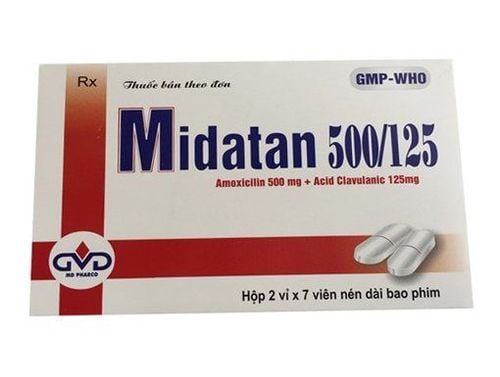This is an automatically translated article.
The article was professionally consulted with Doctor CKII Nguyen Van Thai - Department of Medical Examination & Internal Medicine - Vinmec International General Hospital Da Nang.Paralysis of the vocal cords is a phenomenon in which the larynx cannot perform the function of speaking, breathing and protecting the airways to varying degrees, due to many causes.
1. Causes of vocal cord paralysis
There are many causes of vocal cord paralysis, including vocal cord injury after surgery. Other causes such as:Neck and chest trauma Stroke Malignant or benign tumors compress the muscles, cartilage and nerves that supply the larynx, causing paralysis Infections Neurological diseases such as: Parkinson's causes vocal cord weakness Vocal cord paralysis The larynx has two groups of causes: nerve and muscle paralysis. Neurogenic paralysis accounts for the majority of cases because the nerve that controls laryngeal movement is long, running from the base of the skull to the mediastinum and from the mediastinum to the neck. Along the way, the laryngeal nerve is closely related to many adjacent structures of the chest and neck, so damage to these structures will affect the laryngeal nerve.

2. Symptoms of vocal cord paralysis
Symptoms of vocal cord paralysis include:The patient suddenly lost his voice, after a few days he could speak again, but his voice was changed: Not loud, lost timbre or double voice. Gradually, the voice will return to almost normal thanks to the compensatory work of the contralateral laryngeal nerve. Laryngeal examination revealed two non-closed vocal cords, vocal cords and funnel cartilage on one side reduced or lost mobility, non-motile lateral vocal cords lost tone and fluttered with breathing. Laryngeal motor neuron paralysis can occur on both sides of the vocal cords, this is very rare and begins with sudden shortness of breath due to paralysis of the laryngeal opening muscle, which does not allow air to enter the lungs, then the adductor also becomes paralyzed. Paralyzed, the vocal cords return to the intermediate position.

3. Treatment of vocal cord paralysis
The treatment of vocal cord paralysis can be done by many methods such as:3.1 Massage therapy - acupressure and acupuncture
The procedure mainly affects the area under the chin and the neck of the neck on the paralyzed side. This is an effective method to help cure paralysis of the left and right vocal cords.Massage - acupressure: Relaxes muscle spasms, promotes blood circulation, enhances metabolism, relieves fatigue, increases mucus secretion, lubricates vocal cords, and adds elasticity and mobility of muscles and ligaments.
Massage relaxes the patient, relaxes the laryngeal muscles, improves sound quality, helps eliminate inflammation caused by the accumulation of waste products in the muscles, and facilitates the repair of damage in the muscles larynx.
3.2 Surgical treatment
If the cause of vocal cord paralysis is found to be a tumor in the neck or mediastinum... it is necessary to surgically remove the tumor and monitor the recovery of the vocal cords.Fixed vocal cords: One needle is inserted through the thyroid cartilage in front of the oblique line, the second needle is inserted a few mm below the first needle. A single wire is passed through a needle and made a loop around the vocal cords. It is pulled outside the vocal cords and ligated on the outer surface of the thyroid cartilage. Laser vocal cordectomy: Laser cuts the vocal cords at the level of muscles and ligaments near the base of the larynx. It still respects the anterior margin and the barium of the funnel cartilage. Cut the funnel cartilage by the larynx: It is possible to cut the funnel cartilage through the thyroid cartilage opening, endoscopic or laser Resection of the posterior part of the vocal cords through microsurgery.

Please dial HOTLINE for more information or register for an appointment HERE. Download MyVinmec app to make appointments faster and to manage your bookings easily.














